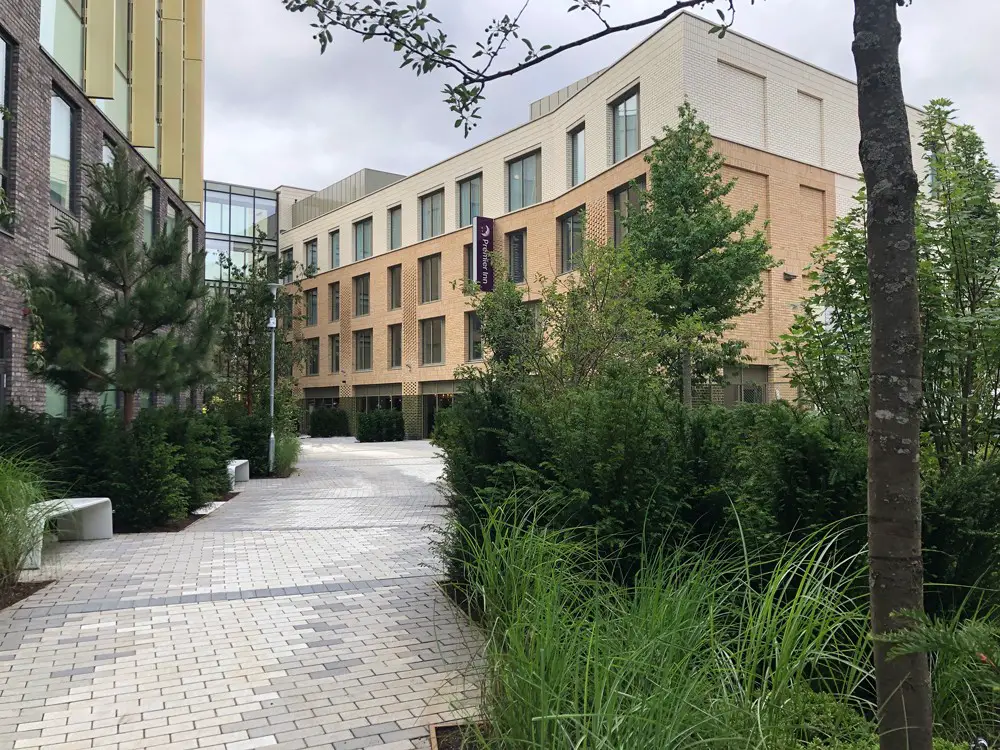
Dexter Moren Associates (DMA) is celebrating the completion of a new 274 key Premier Inn located in the heart of Waterloo, in the vibrant London Borough of Southwark. Working on behalf of client Frogmore, DMA's design for the 9141m2 new build development includes a ground floor restaurant, fronting onto an inviting public courtyard and pocket park.
Nestling between Waterloo Station and Tate Modern, the new Premier Inn features two separate blocks of accommodation connected via an elegant lightweight glazed bridge link. A re-instatement of the lost Marlborough Street, a public route leads through to a verdant pocket park and New Marlborough Yard, designed in the spirit of other ‘discoverable' courtyard spaces such as Ham Yard, St Christopher's Place and Shepherd Market.
Mark Wood, Partner at DMA, comments: "This a thoughtful and outward-looking development that is respectful to its context and neighbours. The beautiful pocket park invites locals and hotel guests alike to meander through the re-instated street and spend time in the restaurant and courtyard.
"Given the current difficulties facing the construction sector in the UK, it is encouraging to see this new build hotel project come to fruition. The design specified a combination of lightweight metal sections and more traditional construction techniques allowing the project to be delivered efficiently and on time. The project stands as testament to our strong track record on delivering commercially successful hotel projects in prime locations.
The site lies between the intense activity of The Cut with its shops, restaurants, bars and cultural entertainment and the quiet residential area of Ufford Street. DMA's design therefore took careful account of the context of the new hotel, bringing some of the Cut's liveliness into the public realm to the north, whilst grouping the quieter sleeping accommodation closest to the residential area."
Continues Mark: "Our design reinterprets local materials and characteristics into an under-stated, contemporary piece of quality architecture that is respectful to its context and neighbours. Three colours, textures and tones of brickwork (glazed green, yellow London stock and pale white matt) reflect the local Victorian industrial vernacular and public houses and give a light, delicate façade, with a repetition of bay elements creating a structure and vertical rhythm. Perforated metal panels and detailing provide a subtle industrial reference."
The pocket park incorporates seating, sculpture and abundant planting to offer respite and a sense of place within the hubbub of city life. Diverse tree species provide shade and create a calm oasis, as well as helping to improve local air quality. Native and ornamental plants will foster biodiversity throughout the scheme and a mosaic of wildflower and sedum green roofs will provide a habitat for wildlife.
The hotel expects to welcome its first guests this summer.